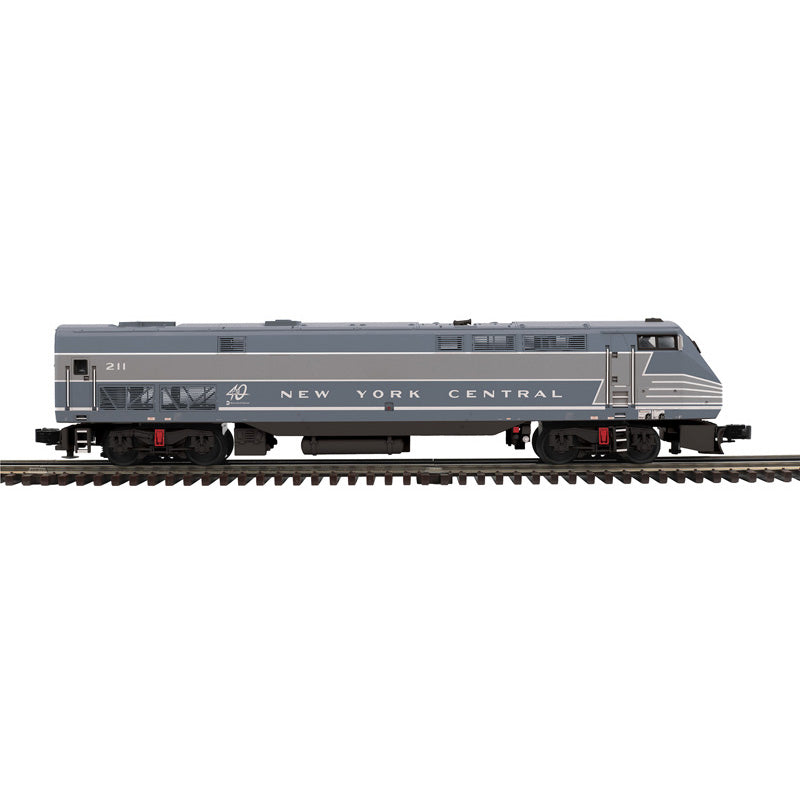Love it? Add to your wishlist
Your favorites, all in one place. Shop quickly and easily with the wishlist feature!
[message]
[title]
[message]

Announcement Date:
Guaranteed Pre-Order Due Date:
Expected Delivery Date:
Individually Boxed: No - 2 to a case
| Announced Date: | April 2024 |
| Released Date: | Mar 2025 |
| Individually Boxed: | No - 2 to a case |
Amtrak’s Genesis was the first newly designed American passenger diesel in nearly four decades. Beginning in 1993, it replaced Amtrak’s fleet of EMD F40PH diesels, which were really modified freight engines — designed to be resellable in case Amtrak went out of business.
Amtrak’s president at the time was Graham Claytor, a lover of trains who had previously headed the Southern Railway and been Secretary of the Navy. Cesar Vergara, a young industrial designer who was Amtrak’s Manager of Car Design, asked Claytor for the chance to give the new engine a bold new look. The result was unlike anything else on American rails. It launched Vergara into a career of designing new passenger equipment for railroads across North America and around the world, from Talgo trains in the Pacific Northwest to the newest engines today in Boston area commuter service.
Unlike most diesels, whose structural strength comes from a heavy frame, the Genesis features monocoque construction, in which the body shell carries much of the load instead of just going along for the ride. This allows for a lighter frame, less weight overall, and greater fuel economy.
The Genesis is one-third more powerful than the F40PH it replaced, but burns 22% less fuel. Its height is also 14” shorter than its predecessor, allowing it to travel anywhere Amtrak goes, including the tunnels into Penn Station and Grand Central Station in New York. To make the body easy to fabricate and repair, Vergara used only flat surfaces and sections of cylinders and cones; there are no compound curves like those on the “bulldog” nose of older E-units and F-units. The Genesis name, intended to signify a break from past designs, was chosen in an employee contest at General Electric’s Erie, PA plant, which built the locomotives. The design has won several awards, including a Brunel Award, which recognizes outstanding railway designs around the world, and a Presidential Design Award from the U.S. government. The look of the Genesis is not without its detractors, however. Trains magazine contributor Fred Frailey wrote that “the front of a P42 looks like an armored tank, those shallow windows the slits from which the weapons officer gains sight of targets.”
There are actually three versions of the Genesis. The original 1993 version, model P40DC, has 4,000 horsepower and a 103 mph top speed. Under the hood it is basically a 16-cylinder General Electric Dash 8. Model P32AC, introduced in 1995, was designed specifically for service into New York City, where diesel power is prohibited in stations and approach tunnels under the Hudson River. The P32AC is equipped with retractable pickup shoes for drawing power from the electrified third rail into Grand Central and Penn Station.
The third version and the prototype for our Premier model is the P42DC, built from 1996-2001. Over 200 in number, this class of engines is the backbone of Amtrak service everywhere except the electrified Northeast Corridor. Compared with the earlier P40DC, the P42 features an improved engine uprated to 4200 hp, more modern electronics and cab displays, and a higher top speed of 110 mph.
177 W Main St
Atlanta, IN 46031
765-292-2022
support@mrmuffinstrains.com
Sign up for our newsletter and be the first to know about coupons and special promotions.
© 2025, MrMuffin'sTrains Powered by Shopify
